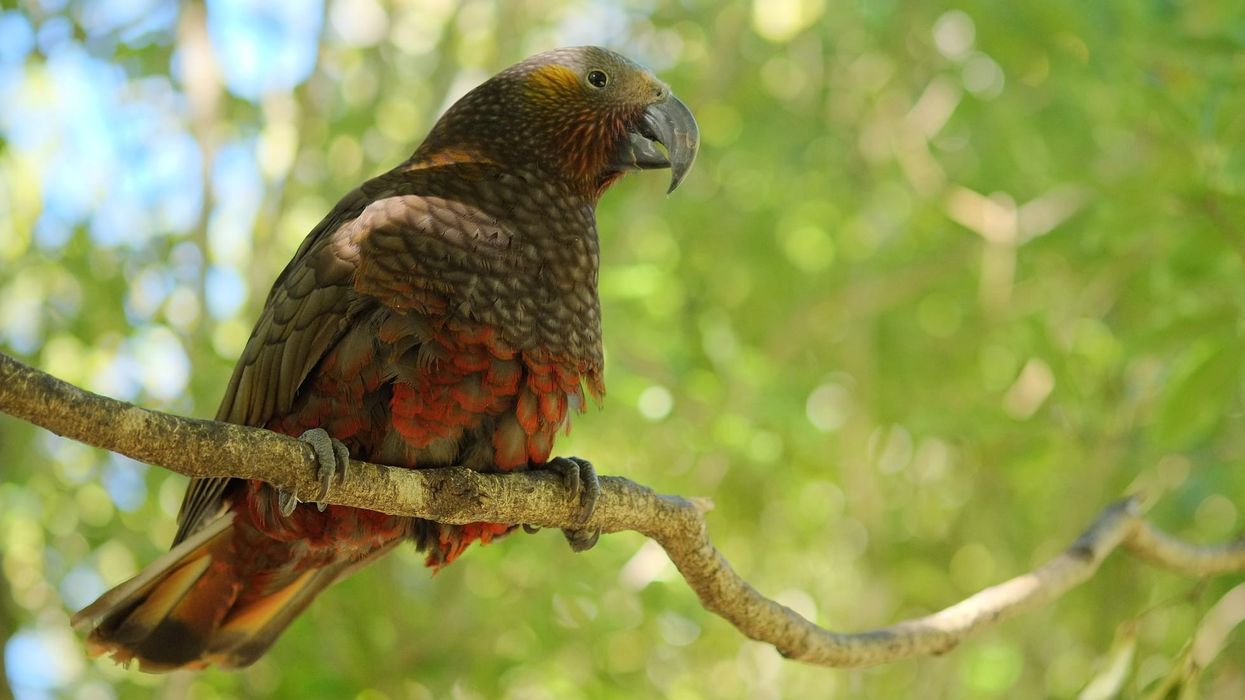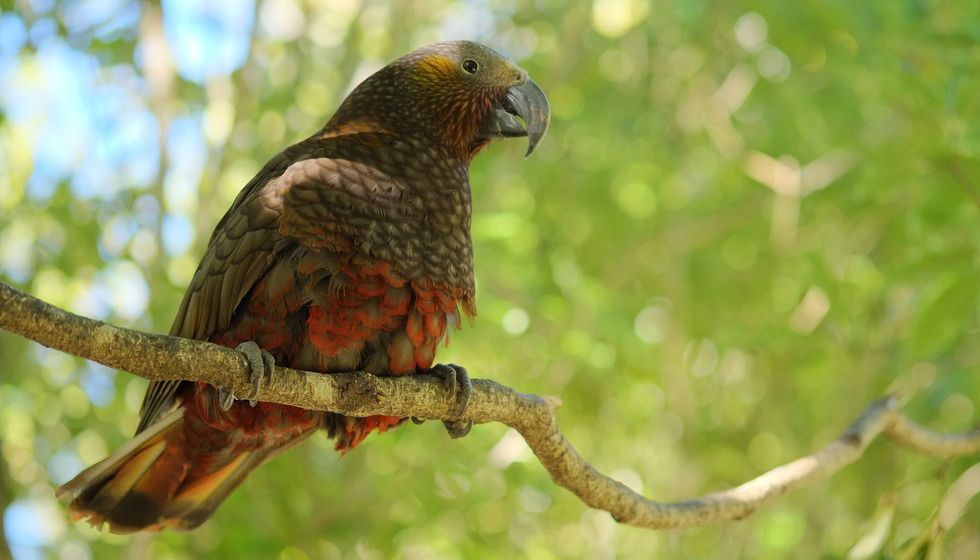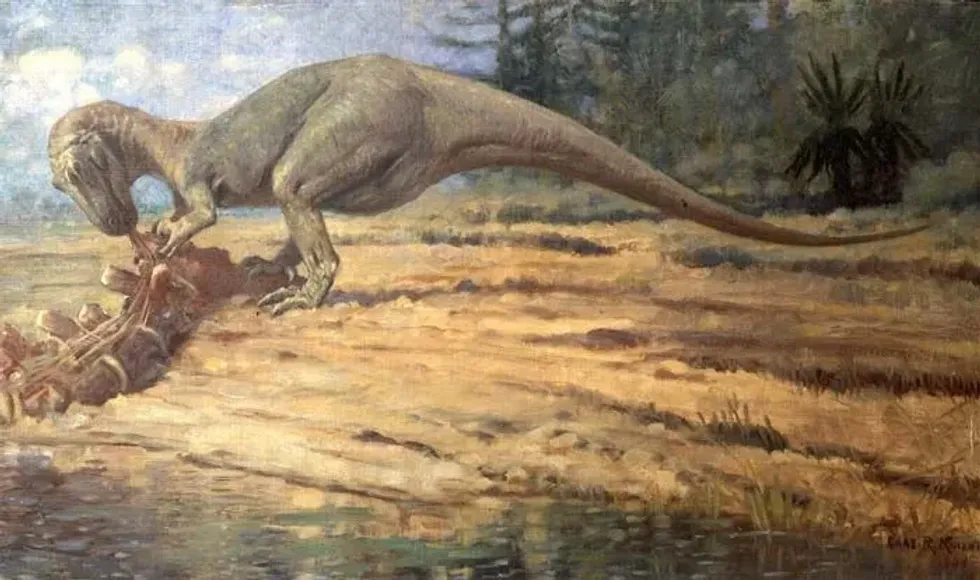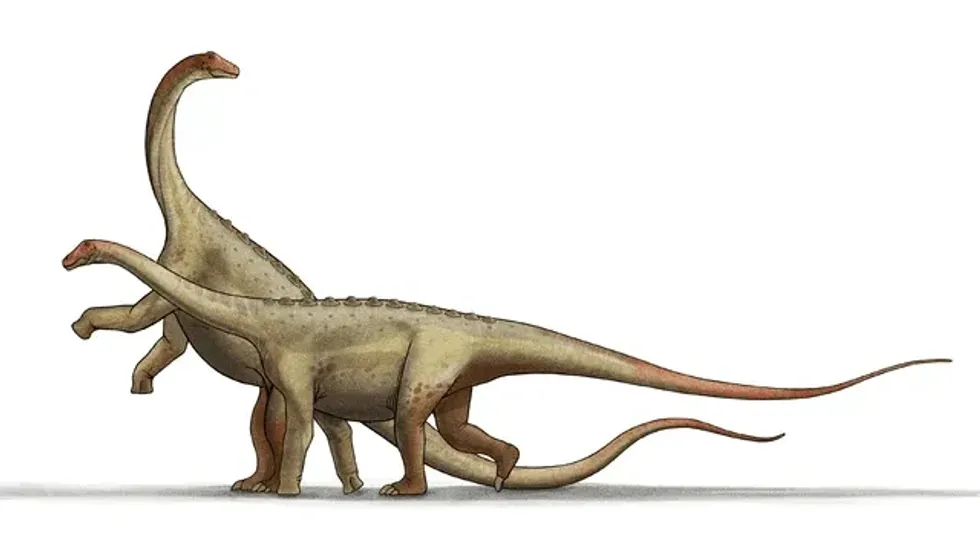The New Zealand kaka (Nestor meridionalis) is a large species of parrot found in the three main islands of New Zealand. New Zealand kaka (New Zealand parrots) are colorful and can be found in various shades of red and brown, with distinctive plumages.
This species looks like the North Island kaka (Nestor meridionalis septentrionalis) but is a little smaller and the colors are brighter.
New Zealand kakas feed on berries, fruit, and honeydew throughout the year. Since these birds live in the forest, they have adapted accordingly and are known to be great fliers.
The New Zealand kaka bird's population has now decreased to around 10,000 due to habitat loss and threats from predators like cats and rats. Its decreasing population has resulted in it being listed as Endangered.
Continue reading to enjoy learning about New Zealand kaka facts. For more relatable content, check out these Amazon parrot facts and blackpoll warbler facts for kids.
New Zealand Kaka Interesting Facts
What type of animal is a New Zealand kaka?
The New Zealand kaka is a species of wild parrot found only in New Zealand. It is closely related to the Nestor meridionalis septentrionalis but is a bit smaller and a bit more colorful. These birds have two subspecies. The sub species are called the North Island kaka and the South Island kaka.
What class of animal does a New Zealand kaka belong to?
The New Zealand kaka belongs to the Aves class and falls under the family Nestoridae and genus Nestor.
How many New Zealand kakas are there in the world?
The population of this species has been greatly affected in recent years and they are almost extinct. According to the IUCN Red List of Endangered Species, there are not more than 10,000 individuals left in the world. Mammalian predators and loss of habitat have led to the decline of the New Zealand kaka's population.
Where does a New Zealand kaka live?
Kaka populations are dense in the offshore reserves of three Islands of New Zealand: Codfish Island, Kapiti Island, and Little Barrier Island. Recently they have been spotted breeding in numbers in Zealandia's mainland island sanctuary.
What is a New Zealand kaka's habitat?
This species of bird can be seen living in tall and mature trees. You will also find them in gardens and you will be able to notice its nest at an elevation of about 3280.8 ft (1000 m).
Who do New Zealand kakas live with?
New Zealand kakas, also known as bush parrots, live with rats and possums.
How long does a New Zealand kaka live?
These bush parrots live as long as 20 years.
How do they reproduce?
These olive-brown colored birds make their nest on hollow trees. They look for forests with tall trees and construct their nests about 26.2 ft (8 m) above the ground. They may also construct their nests on ground level in predator-free offshore islands. Just like the North Island kaka, the female carefully constructs the nest with twigs and leaves.
Females of this species lay their eggs between September and March; the breeding season of this species of bird is quite long. Females incubate the eggs alone for 24 days while the male flies around in search of food in the forest.
Once the chicks are born, both the female and male feed the chicks until they are capable of flying.
What is their conservation status?
According to the IUCN Red List of Endangered Species, the conservation status of this bush parrot is listed as Endangered. There are about 10,000 of these birds left in the world.
Their population has greatly reduced mainly because of habitat loss and introduced predators like rats and cats. The bush parrot also faces competition from wasps and bees who also feed on honeydew.
If these predators, which are found in the forest, are not kept under control, the populations of these birds will continue to decrease and they will likely become extinct like the Nestor products, which became extinct in 1851.
New Zealand Kaka Fun Facts
What do New Zealand kakas look like?

The New Zealand kaka is around 17.7 in (45 cm) in length. The crown and the head are gray-white in color and the nape is usually gray-brown in color. It almost looks like the kea but the plumage of the kaka is darker.
The abdomen is usually red while the feathers of the wings are brown. The plumage is olive-brown, olive-green, or gray-brown in color.
You can even find orange and red streaks under the wings. The breast is dark and it is either orange or yellow in color. It has a tough beak which helps it to eat berries and seeds without any problems.
How cute are they?
This orange-breasted New Zealand parrot is not known to harm humans. This species of parrot gets along well with other birds too. The beautiful orange, red and yellow colors on its feathers makes it really attractive to look at. They are quite cute and harmless.
How do they communicate?
The New Zealand kaka's sound is quite unique and it has distinctive calls for various situations. When the orange-breasted bird is flying in the wild over a canopy it calls out a 'ka-aa' sound.
When it feels threatened it calls out a harsh screech which sounds like 'kraak.' During the breeding season, to woo females, males call out a soft 'tee-tsee-tsee' sound.
How big is a New Zealand kaka?
These birds are about 17.7 in (45 cm) in length and are a bit smaller than one of their sub species, the North Island kaka (Nestor meridionalis septentrionalis). The features of this parrot are often described as more unique than other parrots.
How fast can a New Zealand kaka fly?
The exact speed flown by these dark-breasted birds, which inhabit offshore islands, is not known. It is known that they can fly throughout the day in search of food and also fly long distances.
How much does a New Zealand kaka weigh?
These wild birds weigh around 13.7-19.7 oz (390-560 g).
What are the male and female names of the species?
There are no sex-specific names for the New Zealand kaka.
What would you call a baby New Zealand kaka?
A baby New Zealand kaka is called a chick.
What do they eat?
The feeding behavior of the New Zealand kaka has been greatly affected in recent years after reserve forests of the islands introduced wasps and rats. This has also brought about a change in their breeding behavior.
Their food includes flowers, berries, seeds, buds, fruits, sap, nectar, and plants. They use their strong beaks to break through cones of the kauri tree to feed on seeds and to eat nests of the huhu beetle.
Are they dangerous?
There have been no reports of possible threats by these birds. If no control is exercised on their predators, these birds will soon become extinct.
Would they make a good pet?
They might make good pets but since they are wild birds it is better to leave them in the forest to avoid disturbing their breeding behavior and allow them to lay healthy eggs.
Did you know...
The breeding density in Wellington has increased and that has harmed various mature and exotic trees present in and around Wellington.
They are also found in the forests of Fiordland and Stewart Island.
How have human actions affected the New Zealand kaka?
Habitat loss due to deforestation and for agricultural purposes has led to a considerable decline in the populations of the kaka bird. The New Zealand kaka population increase in Wellington has brought them into direct contact with people.
Ever since people started giving food such as nuts, fruit, and cheese to these birds, a metabolic bone disease has been reported in newborns which can lead to death.
Human intervention has resulted in them leaving the islands and coming to Wellington in search of food. To find food, they are being forced to leave the forest and come in direct contact with humans.
What is the difference between kea and kaka?
The kea is a larger species of parrot with an olive-green plumage and a slender gray-black bill. Whereas, the kaka is smaller than the kea and has olive-brown plumage and a strong beak.
Kakas feed on live trees whereas keas do not. Kea parrots are seen in lower valleys and steep mountains while the kaka is seen at an elevation of around 3280.8 ft (1,000 m).
Here at Kidadl, we have carefully created lots of interesting family-friendly animal facts for everyone to discover! Learn more about some other birds from our palm cockatoo surprising facts and Alexandrine parakeet fun facts pages.
You can even occupy yourself at home by coloring in one of our free printable magnificent riflebird coloring pages.









